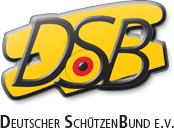Shoulder pain caused by injuries in korean elite archers
(Verletzungsbedingte Schulterschmerzen bei koreanischen Elite-Bogenschützen)
Purpose: There has been a lack of study on the pains of Korean archers, who have been getting remarkable results in international competitions. In this study, we investigated the epidemiology of shoulder pain, which is known as the most commonly complained symptom of Korean archers.
Methods: The participants were 58 elite archers in the city of Gwangju, South Korea. The method of the study was a retrospective cohort study by questionnaire and ultrasound and physical examination. Variables of individual characteristics, training patterns, the character of pain were analyzed in different age groups. Furthermore, groups were divided into those with shoulder pain and those without pain to analyze each group`s shoulder function.
Results: The most common injury was shoulder injury (65.6%), and hand injury was the second-highest prevalent injury (29.3%). These two injuries were most prevalent in all age groups. Among 58 participants, 40 showed shoulder pain, but most were mild (n=30, 51.7%) and severe pain was observed in some participants (n=2, 3.5%). Mild pain was most common in each group and it showed the highest prevalence in college students (70.0%). Pain was most observed in the drawing arm, and it was triggered most when drawing the bow. In the shoulder function test category, Constant-Murley score and American Shoulder and Elbow Surgeons score were observed the lowest in the group with shoulder pain with statistical significance.
Conclusion: Shoulder injury had a high prevalence in Korean archers. Correspondingly, those with shoulder pain had lower shoulder function test scores.
© Copyright 2021 The Korean Journal of Sports Medicine. Alle Rechte vorbehalten.
| Schlagworte: | Bogenschießen Leistungssport Hochleistungssport Koreanische Volksrepublik Wettkampf Verletzung Schulter Hand |
|---|---|
| Notationen: | technische Sportarten Biowissenschaften und Sportmedizin |
| DOI: | 10.5763/kjsm.2021.39.4.146 |
| Veröffentlicht in: | The Korean Journal of Sports Medicine |
| Veröffentlicht: |
2021
|
| Jahrgang: | 39 |
| Heft: | 4 |
| Seiten: | 146-153 |
| Dokumentenarten: | Artikel |
| Sprache: | Englisch Koreanisch |
| Level: | hoch |
